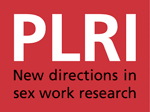HIV
The news that people living wtih HIV who are on antiretoviral therapy will have a huge effect on HIV programming for sex workers. It suggests that ARV therapy rather than condom promotion may account for the huge reduction in HIV transmissions during commercial sex over recent years. It also raises the question of whether voluntary testing should be replaced by routine testing. What it definitely raises is the importance of free access to ARVs, nutrition and adherence support for all. The Regional Dialogue will take place on 3-4 August 2011 in Johannesburg, South Africa. In addition to giving voice to regional and country perspectives on issues of

